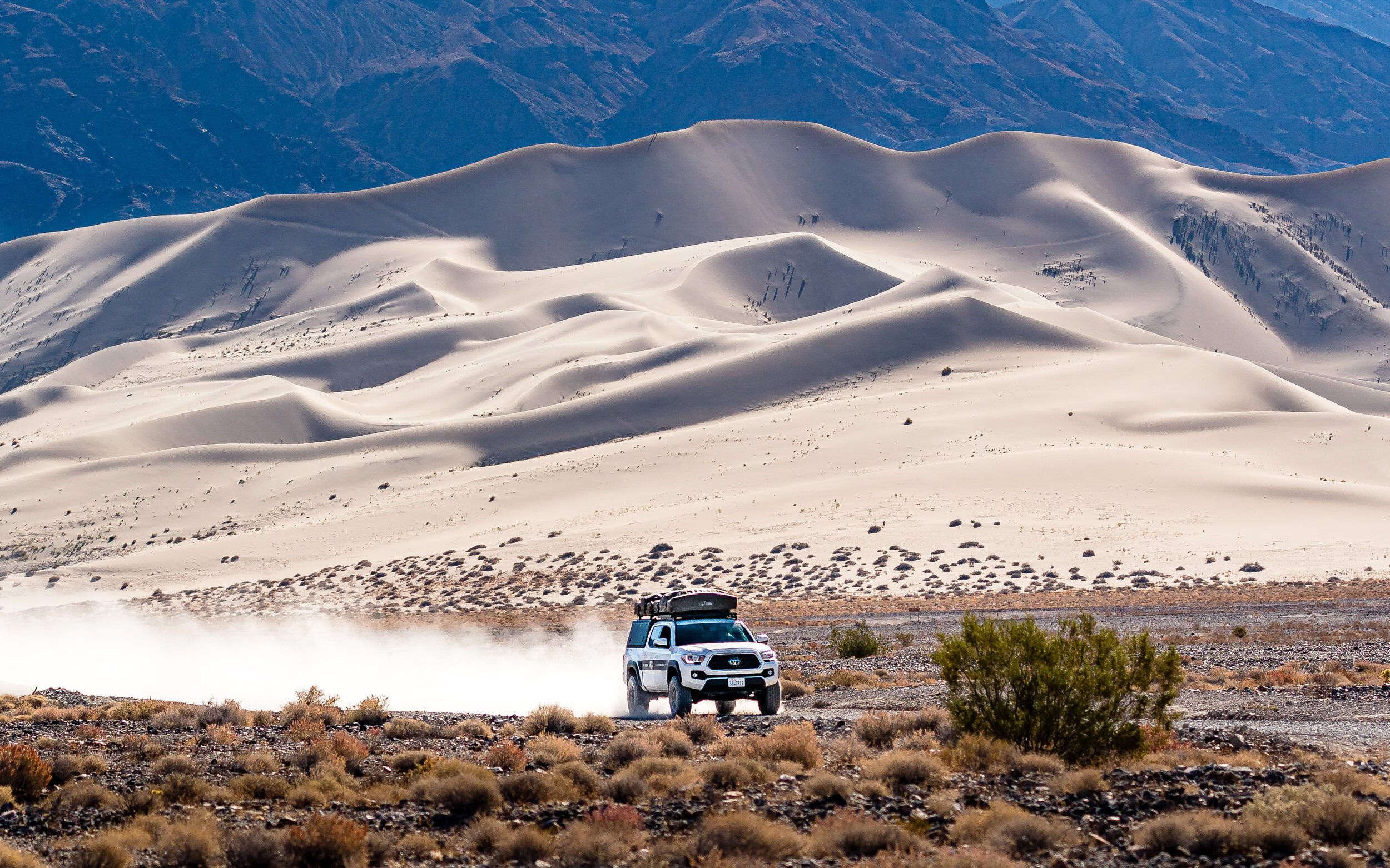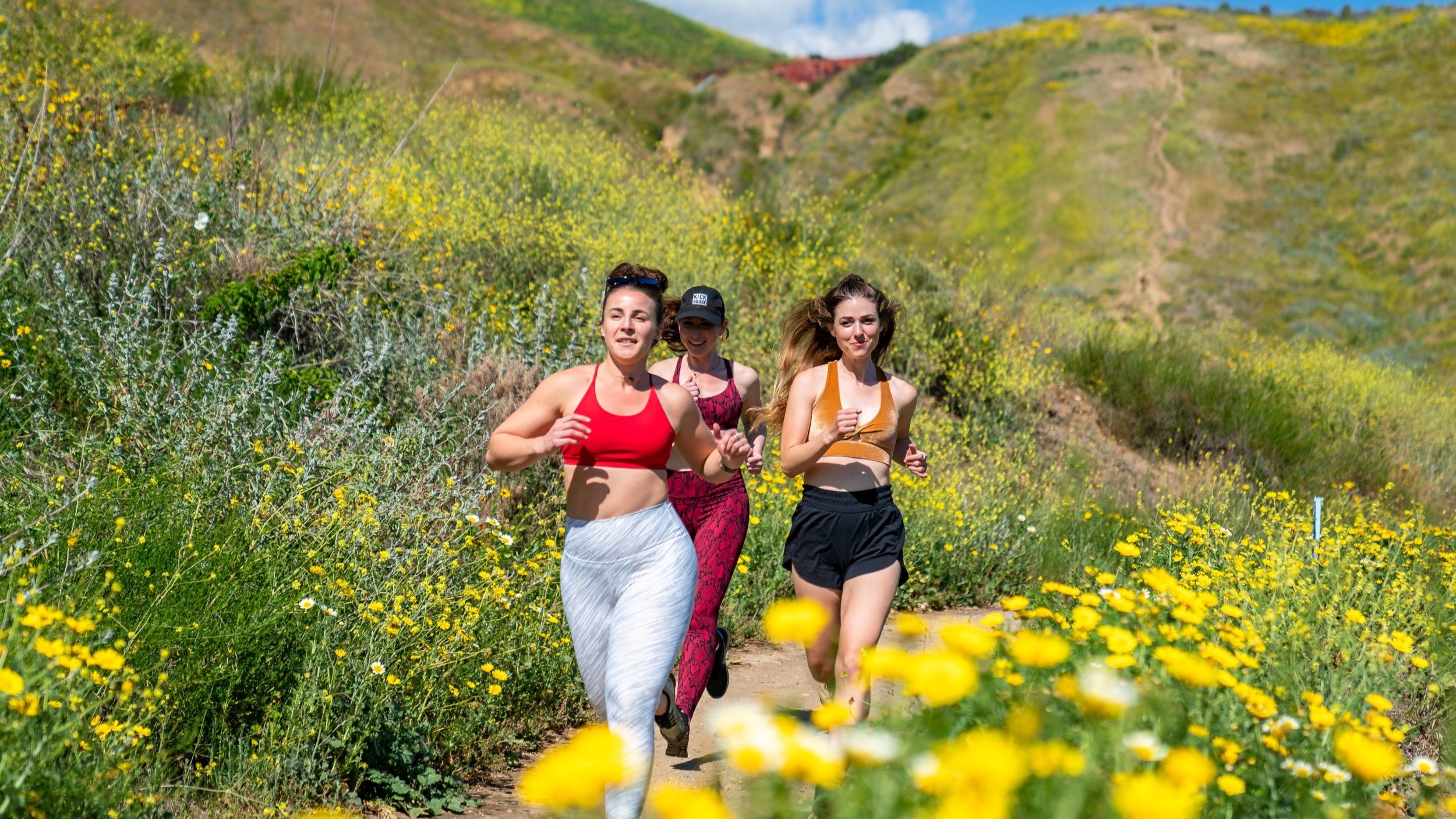The Stillness That Remains

Joshua Jackson of The Forgotten Lands Project and the forthcoming book The Enduring Wild: A Journey into California’s Public Lands, returns to the remote Bodie Hills of eastern California—an austere, wind-swept plateau nestled between the Sierra Nevada and the Great Basin Desert. What begins as a solitary night under fading October light becomes a meditation on memory, belonging, and the quiet endurance of our wild places.
by Joshua Jackson, Illustrations by Rebekah Nolan
The stillness hits me first: more than the altitude, more than the cold, and more than the last sliver of sun cresting over the Sierra Nevada.
It’s been a long day getting to this moment. I left Los Angeles before the sunrise, coffee in hand, and just arrived. It’s 6:13 p.m.
Fourteen months ago, as I was traveling through here, I scoped out this exact spot to spend the night—a small turnout along a long gravel road, deep in the middle of nowhere. Nine thousand feet in elevation, with the kind of views—near and far—that take your breath away. The idea of returning stayed with me most days between then and now, looming like a wrapped present.
Nearby aspen groves are lit with an October concoction of fiery orange—their leaves offering a final showcase before succumbing to the cold and falling aimlessly to the earth. Sagebrush dominates the terrain, anchoring the landscape as everything else begins to shift from autumn to winter. And to the distant north and west, the formidable sentinels of the Sierra Nevada stand watchful.
My temporary camp is all set up, and my warmest clothes are fighting valiantly against the plummeting temperature. I pour a small glass of whiskey and plop down in my chair. There is no wind, no sound, no movement. I’m sitting in the middle of a sea of sage, enveloped by its earthy, silvery fragrance. The light is fading fast, but a pink glow is hanging on over the Sierra. I snap a few photos, sip the amber liquid, and take it all in. It’s that feeling you have when you finally made it.
Welcome to the Bodie Hills, I think to myself.
I sat there a long while that night, watching the light disappear, already knowing I’d be back again.
Over time, it’s become more than a personal refuge—it’s a landscape I’ve come to know deeply, one that holds stories of endurance, erasure, and quiet beauty. I’ve walked dozens of miles here—along creeks, through sagebrush basins, and among volcanic outcrops. I’ve watched herds of pronghorn move across the hills, listened to the aspens quake, and drifted across the Dry Lakes Plateau—sometimes dry and cracked, sometimes brimming with water.
When I was writing my forthcoming book, The Enduring Wild, I devoted an entire chapter to the Bodie Hills and the mining threats that loom over them. That process—of researching, writing, walking—rooted my relationship to this place more firmly. Each return feels less like a trip and more like a reunion.
To understand what keeps pulling me back, you have to start with the land itself.
The Bodie Hills span a 139,000-acre plateau just east of the Sierra Nevada, managed by the Bureau of Land Management. The name stems from W.S. Bodey, an easterner who discovered gold nearby in 1859, and from the nature of the land itself—mountains that behave like hills. Gentle, rounded summits like Bald, Potato, and Bodie Peak, all hovering between 9,000 and 10,000 feet, feel completely approachable.
The hills exist in the borderlands between California and Nevada, between the Great Basin Desert and the granite wall of the Sierra Nevada. Mono Lake lies to the south, Highway 395 to the west, and the Nevada state line to the east. A red-tail hawk soaring westward from Bodie would reach the edge of Yosemite National Park in roughly a dozen miles.
What I find so overwhelmingly compelling is how unassuming the landscape is. The hills don’t contain some of the sublime intangibles that modern nature writing so often praises—there are no granite peaks or rushing rivers or evergreen forests. Instead, it’s the understated beauty that draws me in. The rolling hills, the scattered pinyon, the creeks threading between them. The ability to roam in any direction, untethered.
But these hills aren’t just defined by their shape or silence: they hold stories.
By the late 1870s, the gold mining town of Bodie was a full-fledged boomtown, home to more than 5,000 residents. Today, the remnants of that town and the scarred landscape are preserved in Bodie State Historic Park—a haunting window into California’s gold rush era.
Yet beneath that extractive history lies another, far older one. This is the ancestral homeland of the Kootzaduka’a people, a small band of the Northern Paiute who long moved freely between the Bodie Hills, Mono Lake, and the Sierra Nevada.
The gold rush brought devastation: their summer camps were overtaken by homesteaders, their meadows and seed-gathering routes trampled by sheep and cattle, and their winter source of heat and sustenance—the pinyon pine—chopped down. With their homeland overrun, many Kootzaduka’a became laborers for the very industries that had displaced them.
Extraction has a long memory here.
Just over the Nevada border, core samples are being drilled and roads cut through pinyon woodlands. A project near Bald Peak proposes an open-pit, cyanide heap leach mine—the kind of development that could irreversibly alter one of the most ecologically rich and culturally significant areas in the Eastern Sierra.
Despite it all—the extraction, the erasure, and the threats—the hills remain.
They remain in the stillness that greeted me when I arrived and in the glow that lingers long after the sun dips behind the Sierra.
That night, bundled in my jacket and watching the light fade, I understood why I keep returning— why this place matters. It's a moment I hope others might still experience—before this stillness, too, disappears.
ABOUT THE AUTHOR
Josh Jackson is a writer, photographer, and leading voice for public lands managed by the Bureau of Land Management (BLM). Through his evocative Forgotten Lands Project, Josh employs immersive storytelling and striking visual narratives to inspire appreciation and engagement with our least understood, least protected, and largely unknown landscapes.
His new book, The Enduring Wild, includes an expanded chapter on the Bodie Hills, and can be purchased here and comes with a beautiful set of postcards from around California’s public lands.



























